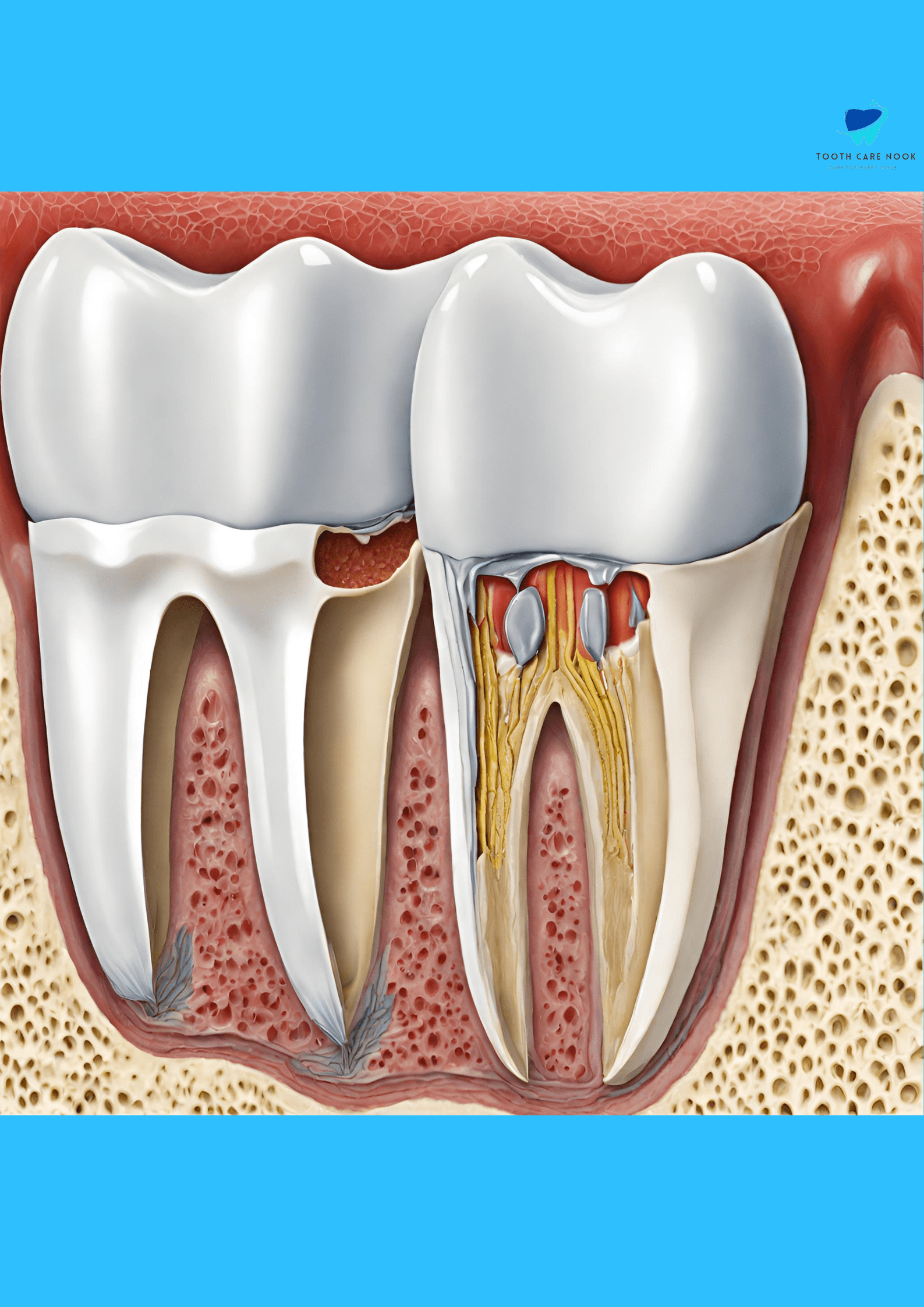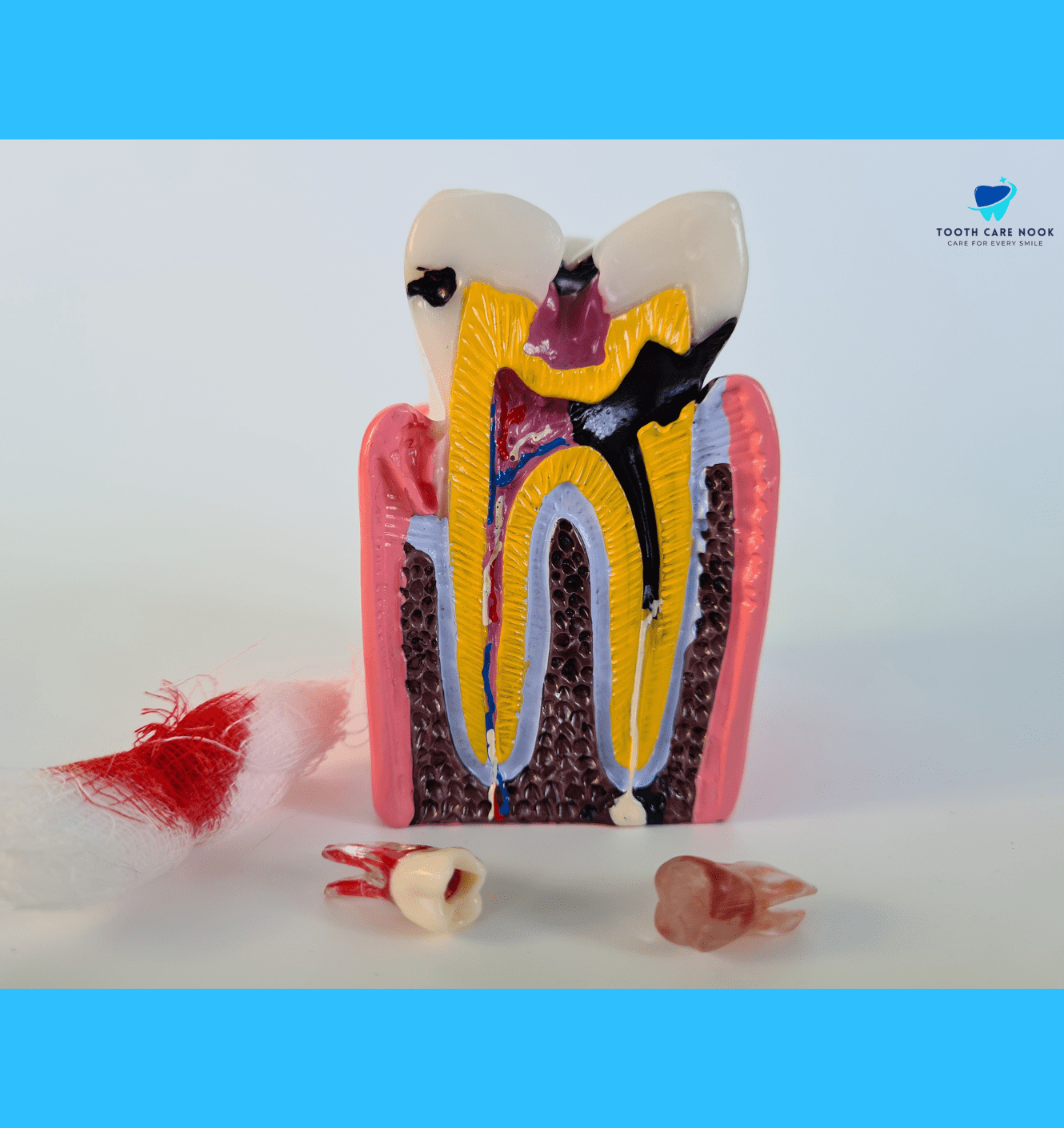Tooth hemisection is a form of endodontic surgery, that splits a multi-rooted tooth into two sections to tackle advanced decay or damage. The procedure involves separating and potentially removing the affected portion while maintaining the healthy segment. This preserves the tooth’s functionality and improves its ability to remain in place.

Why is Hemisection Done?
Hemisection is done to preserve a portion of your tooth when one root is damaged or diseased. It may be due to periodontal disease or decay. It’s a valuable dental procedure to
- Retain the healthy part of your tooth.
- Maintain chewing function.
- Prevent complications like adjacent tooth shifting.
Dental hemisection of molar is a precise surgical procedure performed to remove the damaged portion of your tooth, to preserve its healthy structure and function. It involves several steps as follows.
How Dental Hemisection is Done?
Anesthesia:
The area around your affected tooth will numbed through local anesthesia to ensure the procedure is painless.
Access and Isolation:
The dentist will create a small opening in the gum tissue to access the root of the affected tooth. The area will isolated by using a rubber dam or other methods to keep it dry and free from contamination.
Root Removal:
Then the dentist will carefully remove the damaged or diseased root along with the dental hemisection’s corresponding portion of the crown by using some specialized instruments.
Cleaning and Shaping:
The remaining healthy root surface will be thoroughly cleaned and shaped to ensure the optimal healing and attachment of your gum tissue.
Closure:
Once the root is prepared, the gum tissue will sutured back into place, to ensure the proper alignment and closure of the dental hemisection surgical site.
Caring Tips for Post-Hemisection Surgery
- Take any prescribed pain medications as directed by your dentist to manage discomfort.
- Stick to soft, non-chewy foods and avoid hot, and spicy, to avoid irritation at the surgical site.
- Maintain excellent oral hygiene by gently brushing your teeth at least twice a day.
- Allow your body time to rest and recover.
- Rinse your mouth with warm saltwater several times a day, especially after meals, to help keep the surgical area clean and reduce swelling.
- Avoid chewing on the side of your mouth where the surgery was performed, especially in the initial days following the procedure.
- Apply an ice pack or cold compress to the outside of your cheek near the surgical area.
Is Root Hemisection Complicated?
Root hemisection is a relatively complex dental procedure. It requires careful post-operative care and monitoring to promote healing and prevent complications. Below are the problems and complications associated with the procedure.
Problems Associated with Root Hemisection
Infection:

There can be a risk of post-operative infection. It can lead to delayed healing, persistent pain, and further damage to the tooth and surrounding tissues.
Long-Term Prognosis:
The long-term prognosis of a tooth having hemisection can be uncertain.
Factors like ongoing periodontal health, occlusal forces, and patient compliance with oral care practices can influence the longevity of the treated tooth.
Periodontal Complications:
Improper healing or inadequate maintenance of oral hygiene post-surgery can lead to periodontal complications, including gum recession, pocket formation, or attachment loss around the remaining root surfaces.
Tooth Mobility:
Root hemisection may compromise the stability of the remaining portion of the tooth, particularly if significant bone loss or periodontal damage is present. This can result in increased mobility or loosened teeth over time.
Adjacent Tooth Trauma:
During the hemisection procedure, neighboring morals or surrounding structures may sustain damage, which leads to complications such as root fractures, pulp exposure, or periodontal injury.
« Back to Glossary Index